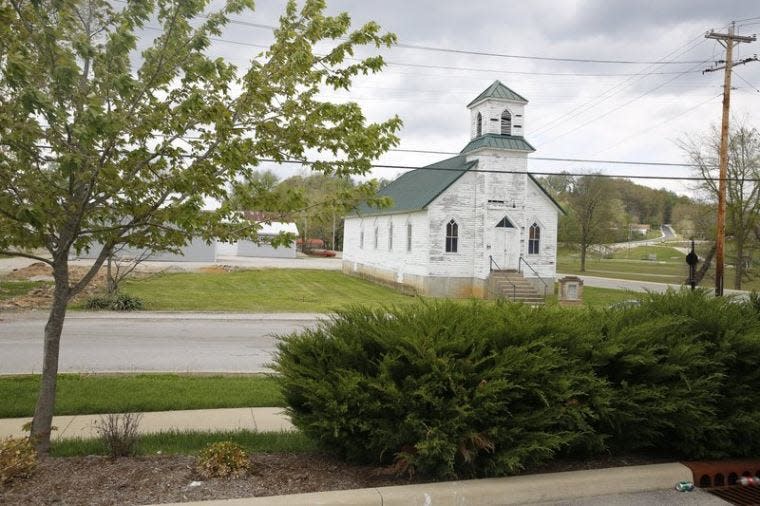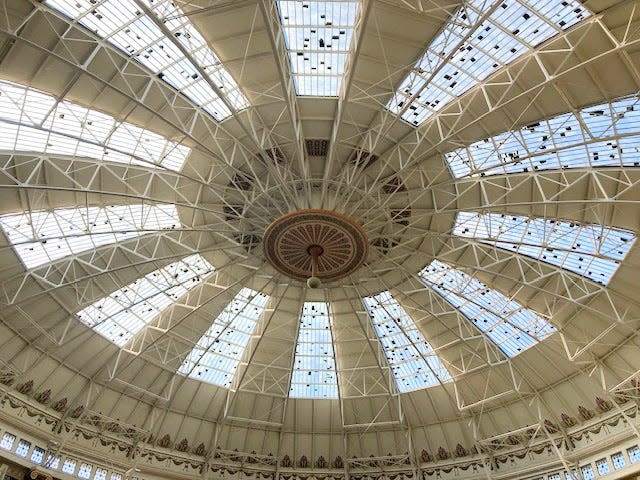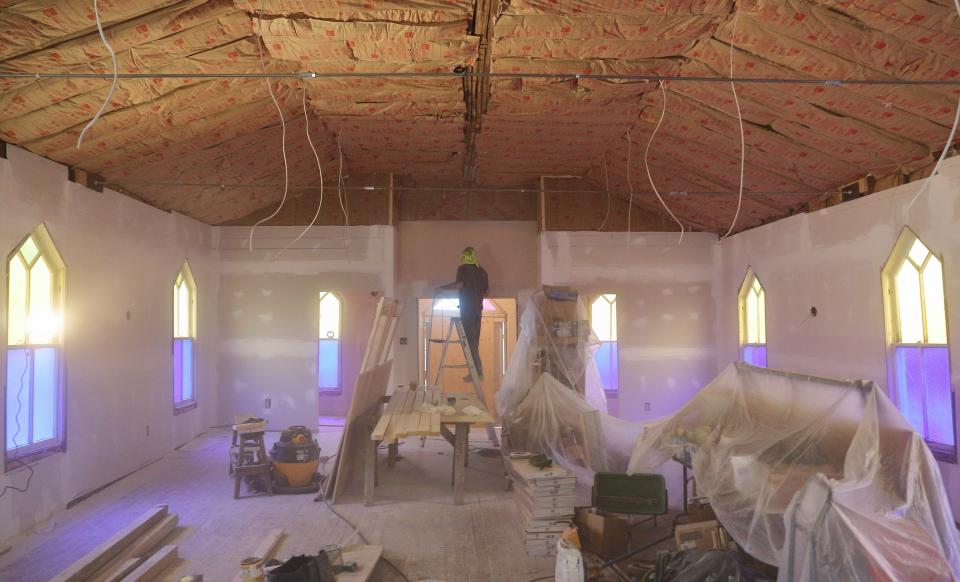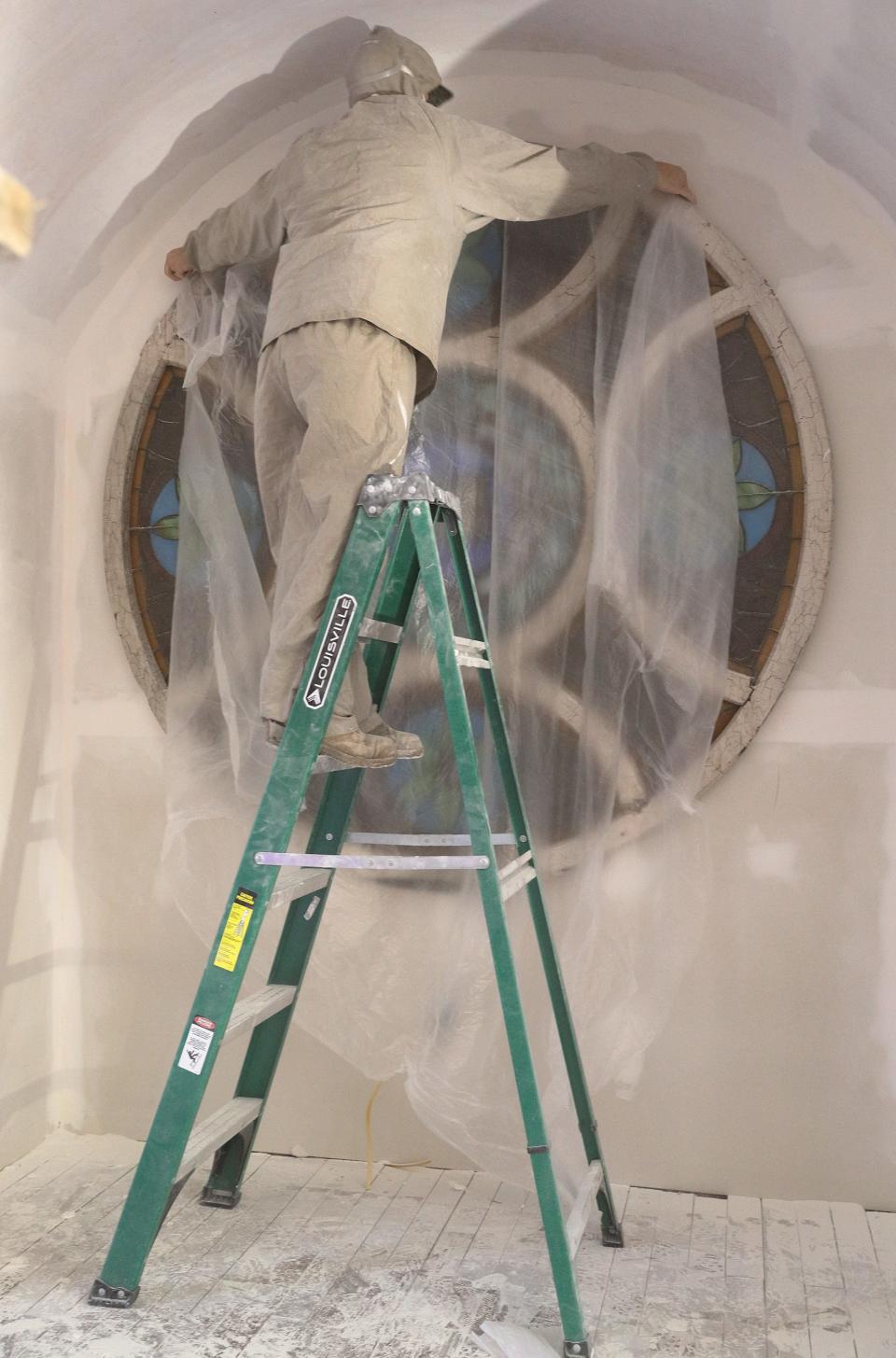How Black faith leaders in Bloomington revived a piece of Indiana's African American history

In many ways, the story of the West Baden First Baptist Colored Church is one of resilience.
It was resilience that brought Black workers from poor working conditions in the South to the West Baden Springs Hotel, where they found well-paying jobs and laid the foundation for a community. It was resilience that made the community stand their ground in the face of racial terror groups like the Ku Klux Klan and White Caps who threatened them and the prosperous community they had built.
And it was resilience that built up the communal center of the West Baden Black community, the First Baptist Colored Church.

Erected in 1903 on a parcel of land that the hotel’s owner, Lee Sinclair, sold for $1, the West Baden First Baptist Colored Church became the “foundation” of West Baden’s Black community, according to Bloomington documentarian Elizabeth Mitchell.
“Back then, the church was the foundation of Black communities. They had an NAACP chapter that met at that church, social gatherings, clubs – a lot of things centered around that church,” Mitchell said. “It was the glue.”
Yet with prohibition, changes to gambling laws and the Great Depression, the hotel and West Baden community began to falter, especially as workers moved to other jobs. In their absence, the once-vibrant First Baptist Church declined in attendance and eventually sat dormant for decades. Over time, the building fell into disrepair.
It wasn’t until 2016 that the church’s doors swung open once again, and a new chapter of resilience, led by volunteers in Bloomington and the local community, began for the historic Black church.
A long path to restoration
When Deacon William Brown of Second Baptist Church in Bloomington first heard of and agreed to join a volunteer effort to restore the West Baden church in 2016, he didn’t know what he was signing up for. He might’ve known that Indiana Landmarks had listed it as one of the state’s top 10 “most endangered” buildings, but it wasn’t until he stepped foot inside that he got a taste of the work that would need to be done.

“It was an eye opener,” Brown said. “There were holes in the walls, the birds had occupied the bell tower, it was just a disaster.”
The restoration was spearheaded by Mitchell and Second Baptist pastor Rev. Dr. Bruce Rose, who’d seen the decaying state of the historic Black church and felt compelled to preserve its history.
From the archive: Church volunteers restoring piece of African-American history in West Baden
Restoration was no small effort, especially at a historic church that required special materials and following special historical landmark guidelines. It was such an undertaking that the West Baden town council president sold the land for just $1 to anyone willing to make an investment in restoring it.
When Rose and the volunteer group at Second Baptist purchased the land, renovation costs were expected to exceed $200,000.
“It was outrageous,” Brown said.
To save on costs, Brown and the other volunteers rolled up their sleeves and did most of the manual labor themselves.

The grueling work included stripping drywall, power washing the exterior, refortifying walls and flooring and even climbing scaffolding as the team of volunteers worked to restore the church to its former glory – a feat Mitchell notes is especially impressive as most of the volunteers were older congregation members.
“We stripped it down to its bare bones,” Mitchell said. “All the credit goes to those volunteers – 70- and 80-year-old men.”
Mitchell, who both volunteered for the renovation and documented the nearly 7-year process, described the work on the West Baden church as a “labor of love” – a phrase she ultimately chose as the title of her documentary, “Reviving the West Baden Colored Church: A Labor of Love.”
“We stuck with it, we drove down there – no one gave us gas money – twice a week, for pretty close to seven years,” Mitchell said.
Mitchell said throughout the process, the local community in West Baden and French Lick was engaged and supportive.
“The community itself was wonderful,” Mitchell said. “When we came back from COVID, everybody had missed us. ‘Where have you been?’ They were used to seeing us working on a church or all going somewhere for lunch together.”
Brown said the local community was pivotal to completing the restoration. Local residents would regularly drop money in the church’s door, bring lemonade and cookies on hot summer days, and offered to help out with the physical labor.
Restoration slowed in 2020 and early 2021 as the pandemic caused safety concerns, but volunteers kept on and, in 2022, the project was pushed over the finish line. On Aug. 7, 2022, the church reopened its doors and held a highly-anticipated rededication ceremony.
“It was amazing to go from the way it was to the way it looks now. It’s just like night and day,” Brown said. “Now when you go in there and look at it, you go, ‘Wow.’ It’s a great accomplishment."
Volunteers reflect on support from local community
The church today is warm and bright, outfitted with new flooring, bright white walls, and stained glass window pieces. Its halls are alive, too; the historic church holds weekly Sunday services, with interim Rev. Robert Pendergrass leading the congregation.
“He’s doing a great job,” Mitchell said. “Last year, he put on a musical.”
Mitchell and Brown say they’ve both been back to visit the church since the restoration was finished and are always greeted warmly by Pendergrass and the surrounding community. To Mitchell, the community reminds her of the resilient history behind the church, and is a key reason why the difficult work was completed.
“What made it such an easy thing and a labor of love is that community being so friendly and nice and kind,” Mitchell said. “They treated us like humans.”
“The community was all behind us,” Brown said. “And there’s really a satisfaction that you get from that.”
Learn more about the history of the West Baden First Baptist Colored Church and its restoration with Elizabeth Mitchell’s documentary “Reviving the West Baden Colored Church: A Labor of Love,” screening Feb. 22 at 6 p.m. at Indiana Landmarks, 1201 Central Ave. in Indianapolis. The film will also air on Bloomington's PBS station WTIU on Feb. 25 at 5 p.m and Feb. 29 at 8 p.m.
Reach Brian Rosenzweig at brian@heraldt.com.
This article originally appeared on The Herald-Times: West Baden First Baptist Church restoration captured in documentary

